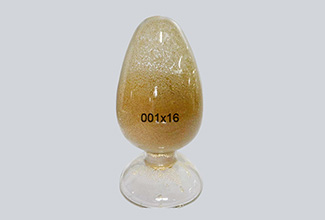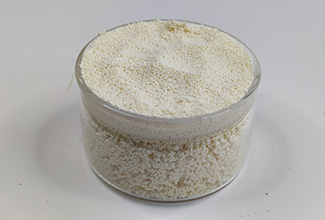How To Deal With The Oxidation Of Cation Resin?
The chemical stability of a resin can be expressed in terms of its ability to withstand the action of oxidizing agents. Oxidation of cationic resins mainly results in chain breaking of the backbone, while negative resins mainly show degradation of the quaternary amine groups. The oxidation of cationic resins is mainly characterized by chain breaking of the skeleton and the formation of low molecular sulfonic acid compounds as well as carboxylic acid groups. In the past, free chlorine in raw water mainly came from the disinfection of domestic water. In recent years, due to the increase of organic content and bacteria in natural water, chlorine is also added before coagulation and clarification to sterilize and reduce COD, therefore, attention must be paid to the damage of free chlorine to the cation resin. In the regeneration process, if poor quality industrial hydrochloric acid or by-product hydrochloric acid is used, which contains oxidant will also cause damage to the positive resin. It is generally required that the content of free chlorine in the raw water entering the chemical desalination equipment should be less than 0.1mg/L.
Methods to prevent oxidation of positive resin
(1) Activated carbon filtration. A common method to prevent oxidation of cation resin is through activated carbon filtration. The principle of free chlorine removal by activated carbon is not simply adsorption, but a chemical reaction on the surface. In order to remove free chlorine, a high filtration flow rate (about 50m/h) can be used. At the same time, activated carbon has a high adsorption capacity when adsorbing free chlorine (more than 6.5mg of Cl2 per gram of activated carbon). When the activated carbon filter is only used to remove free chlorine, the amount of Cl2 leaking ≥0.1mg/L can be used as the end point.
(2) Use high cross-linked cation resin. As the cross-linking degree of resin increases, its antioxidant performance is enhanced.After the cation resin is oxidized, the skeleton is loosened due to the broken chain, the volume expands and the water content increases. The macroporous cation resin has better antioxidant properties because of its high cross-linking degree. However, as the cross-linking degree of the resin increases, its exchange capacity decreases and the price increases, so it is rarely used in practice.

-
 001x16 Strong Acid Cation Exchange ResinAppearance: Claybank to tan transparent spherical particle.The degree of crosslinking : 16%.Ionic form:Na+
001x16 Strong Acid Cation Exchange ResinAppearance: Claybank to tan transparent spherical particle.The degree of crosslinking : 16%.Ionic form:Na+ -
 D001macroporous cation ion exchange resinAppearance: Light brown opaque spherical particles.Ionic form:Na+Volume complete exchange capacity(mmol/ml): ≥1.80
D001macroporous cation ion exchange resinAppearance: Light brown opaque spherical particles.Ionic form:Na+Volume complete exchange capacity(mmol/ml): ≥1.80 -
 D113 Weakly Acidic Polyacrylic Cation Exchange ResinAppearance: Milky white or pale yellow opaque particles.The degree of crosslinking : 7%.Ionic form:H+
D113 Weakly Acidic Polyacrylic Cation Exchange ResinAppearance: Milky white or pale yellow opaque particles.The degree of crosslinking : 7%.Ionic form:H+

